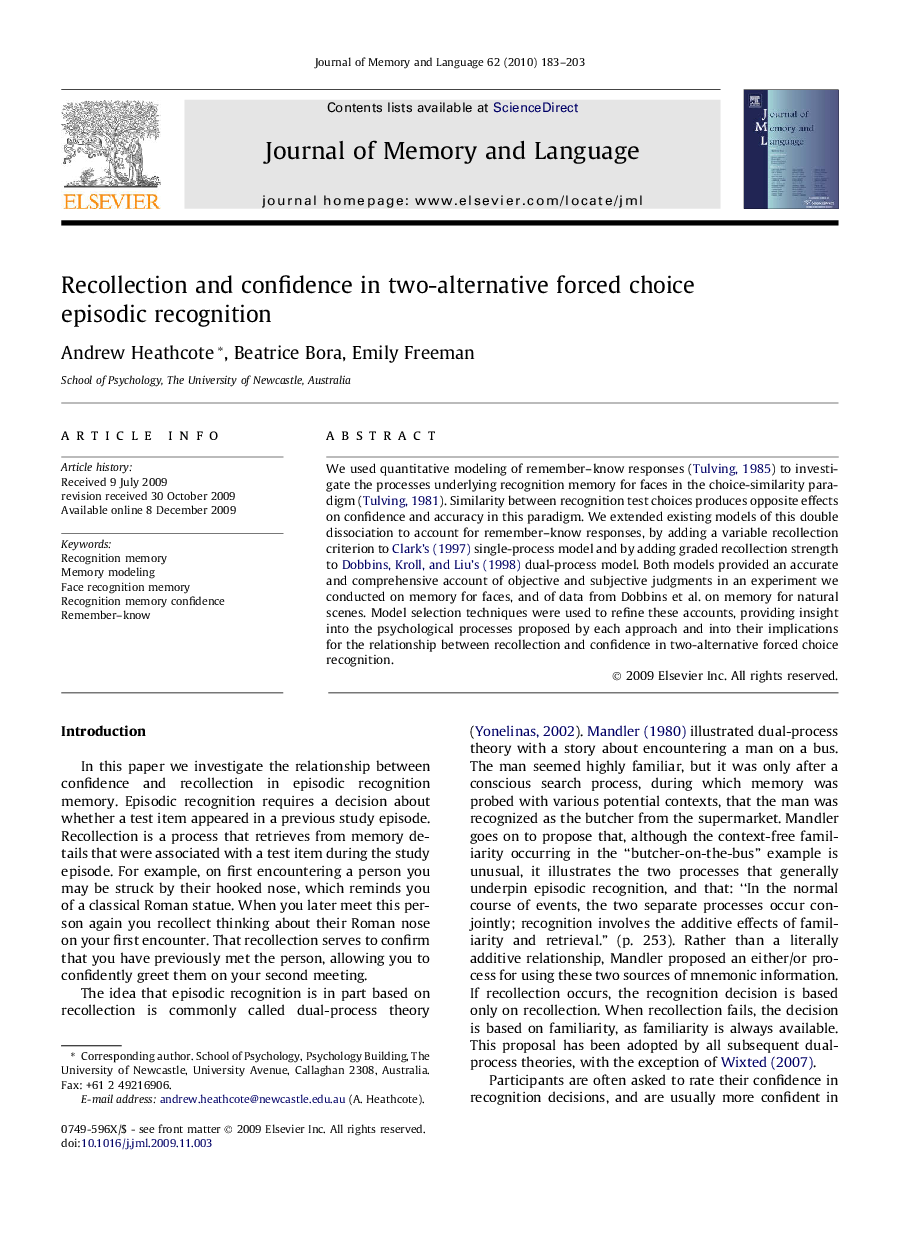| Article ID | Journal | Published Year | Pages | File Type |
|---|---|---|---|---|
| 932093 | Journal of Memory and Language | 2010 | 21 Pages |
We used quantitative modeling of remember–know responses (Tulving, 1985) to investigate the processes underlying recognition memory for faces in the choice-similarity paradigm (Tulving, 1981). Similarity between recognition test choices produces opposite effects on confidence and accuracy in this paradigm. We extended existing models of this double dissociation to account for remember–know responses, by adding a variable recollection criterion to Clark’s (1997) single-process model and by adding graded recollection strength to Dobbins, Kroll, and Liu’s (1998) dual-process model. Both models provided an accurate and comprehensive account of objective and subjective judgments in an experiment we conducted on memory for faces, and of data from Dobbins et al. on memory for natural scenes. Model selection techniques were used to refine these accounts, providing insight into the psychological processes proposed by each approach and into their implications for the relationship between recollection and confidence in two-alternative forced choice recognition.
